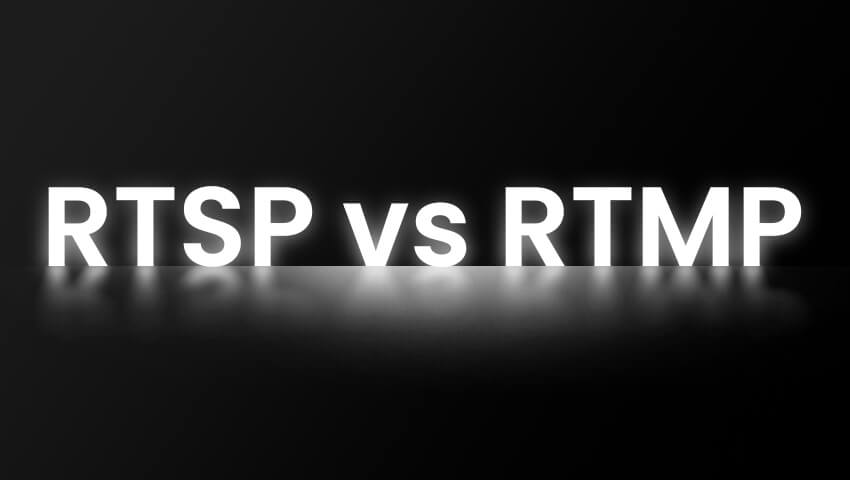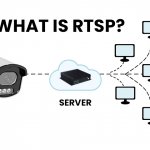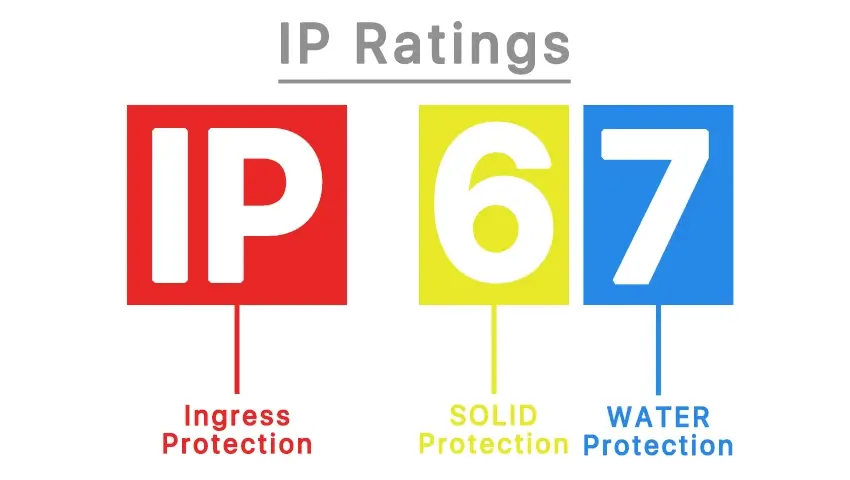Introduction
In today’s digital world, video streaming has become an essential part of entertainment, business, and security applications. From live streaming events to monitoring your home with IP cameras, choosing the right streaming protocol is critical for a smooth and reliable experience.
Two of the most widely used protocols are RTSP (Real-Time Streaming Protocol) and RTMP (Real-Time Messaging Protocol). While both are designed for streaming video, they serve different purposes and have distinct advantages. In this guide, we’ll break down everything you need to know about RTSP and RTMP—including their differences, pros and cons, and best use cases—so you can choose the right protocol for your needs.
Contents
What is RTSP?
RTSP, or Real-Time Streaming Protocol, is a network control protocol designed to control streaming media servers. It works closely with RTP (Real-Time Transport Protocol) to deliver video and audio over IP networks. RTSP is widely used for applications where low latency and high-quality video are essential, such as IP cameras, video surveillance systems, and video-on-demand services.
Key features of RTSP include:
Client-server control: Allows users to play, pause, and stop the stream remotely.
Low latency: Ideal for real-time monitoring applications.
Direct streaming from devices: Commonly used by IP cameras and network video recorders (NVRs).
RTSP is not natively supported by web browsers, which means you typically need a compatible media player or software for viewing streams.
What is RTMP?
RTMP, or Real-Time Messaging Protocol, was developed by Adobe for streaming audio, video, and data over the Internet. Unlike RTSP, RTMP is primarily used for live streaming, especially for broadcasting to platforms like YouTube, Facebook Live, and Twitch.
Key features of RTMP include:
TCP-based streaming: Ensures reliable delivery of data even over unstable networks.
Low latency for live streaming: While slightly higher than RTSP in some cases, RTMP is still suitable for real-time broadcasts
Wide compatibility with streaming servers: Works seamlessly with popular live streaming platforms.
Although RTMP has been largely replaced by newer protocols like HLS for browser playback, it remains a standard for pushing streams from encoders to servers.
Key Differences Between RTSP and RTMP
Although both RTSP and RTMP are designed for streaming video, they are used in different scenarios and have distinct characteristics. RTSP, or Real-Time Streaming Protocol, is primarily built for IP cameras, video surveillance systems, and video-on-demand services. Its biggest strength lies in its very low latency, which makes it suitable for real-time monitoring. However, RTSP is not natively supported by most web browsers, so users usually need a dedicated player or compatible software to view streams.
RTMP, or Real-Time Messaging Protocol, was originally created for live broadcasting on platforms like YouTube, Twitch, and Facebook Live. Unlike RTSP, RTMP is based on TCP, which provides more reliable data delivery, especially in unstable network environments. This makes RTMP highly effective for streaming content across the internet. While RTMP also offers relatively low latency, it is generally slightly higher than RTSP.
Another key difference is in compatibility. RTSP is better suited for closed network environments, such as CCTV and NVR systems, while RTMP works seamlessly with streaming servers and online broadcast platforms. RTSP may struggle with unstable networks, but it excels in bandwidth efficiency for local streaming. RTMP, on the other hand, is easier to integrate with third-party services but often consumes more resources and has limited browser playback support, especially since Flash was deprecated.
In short, RTSP is best for real-time monitoring and surveillance, while RTMP is designed for live broadcasting and content delivery to a wide online audience.
Pros and Cons of RTSP and RTMP
Both protocols have their advantages and limitations depending on your application.
RTSP Pros:
Very low latency, suitable for real-time monitoring.
High-quality video streaming with minimal buffering.
Efficient for closed network systems like CCTV or security setups.
RTSP Cons:
Limited browser support; requires additional software.
Can be affected by network instability in public networks.
RTMP Pros:
Reliable TCP streaming, handles packet loss effectively.
Well-suited for live streaming to platforms like YouTube, Twitch, and Facebook Live.
Easy integration with popular streaming servers.
RTMP Cons:
Slightly higher latency than RTSP.
Mostly legacy support for browser playback; modern streaming platforms prefer HLS or DASH.
Which One Should You Choose?
The choice between RTSP and RTMP largely depends on your use case:
Security Cameras and Surveillance: RTSP is generally better because it provides low-latency streaming, efficient bandwidth usage, and direct device integration.
Live Streaming to Platforms: RTMP is preferred for broadcasting, as it integrates easily with streaming servers and platforms, ensuring stable delivery.
Hybrid Applications: In some cases, you may use both protocols—RTSP for monitoring and recording locally, and RTMP for broadcasting live to audiences.
By understanding your network environment, device capabilities, and streaming goals, you can select the protocol that delivers the best performance and reliability.
FAQ
Q1: Can RTSP be used for live streaming to YouTube or Facebook?
A: Not directly. RTSP is better suited for local monitoring. To broadcast RTSP streams online, you need a media server to convert the stream to RTMP or HLS.
Q2: Is RTMP better than RTSP for low-latency video?
A: RTSP usually provides slightly lower latency, making it ideal for real-time monitoring, while RTMP is reliable for live streaming but may have minimal delay.
Q3: Can I convert RTSP to RTMP?
A: Yes, using media servers like FFmpeg, Wowza, or Nginx with RTMP module. This allows local camera streams to be broadcast online.
Q4: Which protocol uses less bandwidth?
A: RTSP is generally more efficient for local networks and IP cameras, while RTMP can consume more bandwidth depending on the encoding and server setup.
Conclusion
Both RTSP and RTMP play important roles in the world of video streaming, but they serve different purposes. RTSP is ideal for security and surveillance applications with low latency needs, while RTMP is best for live broadcasting to online platforms.
By understanding their differences, pros, and cons, you can choose the protocol that meets your specific needs, whether it’s monitoring your property, streaming live events, or building a hybrid video streaming system.
With this knowledge, you can ensure smooth, reliable, and high-quality video streaming for any application.





